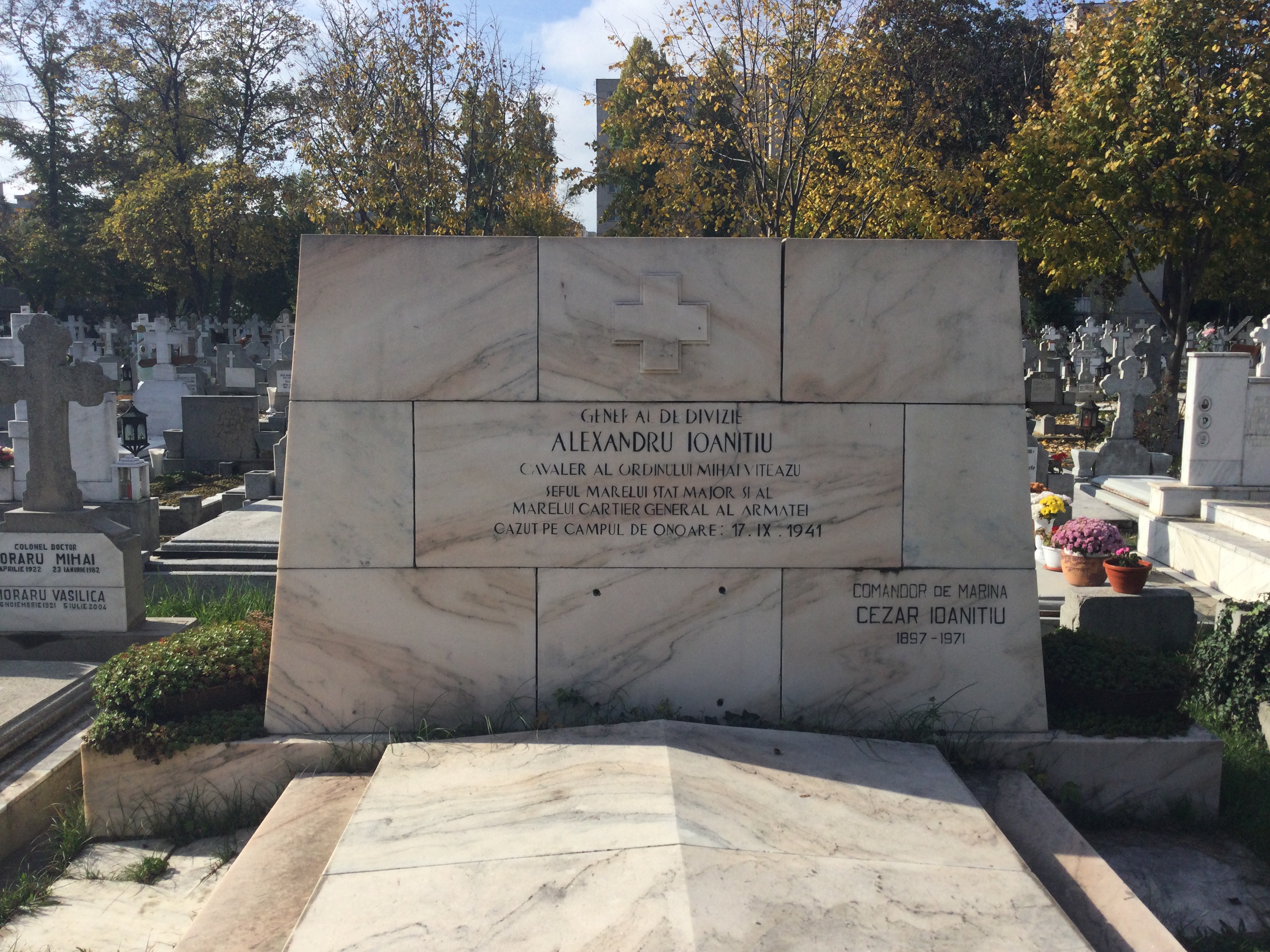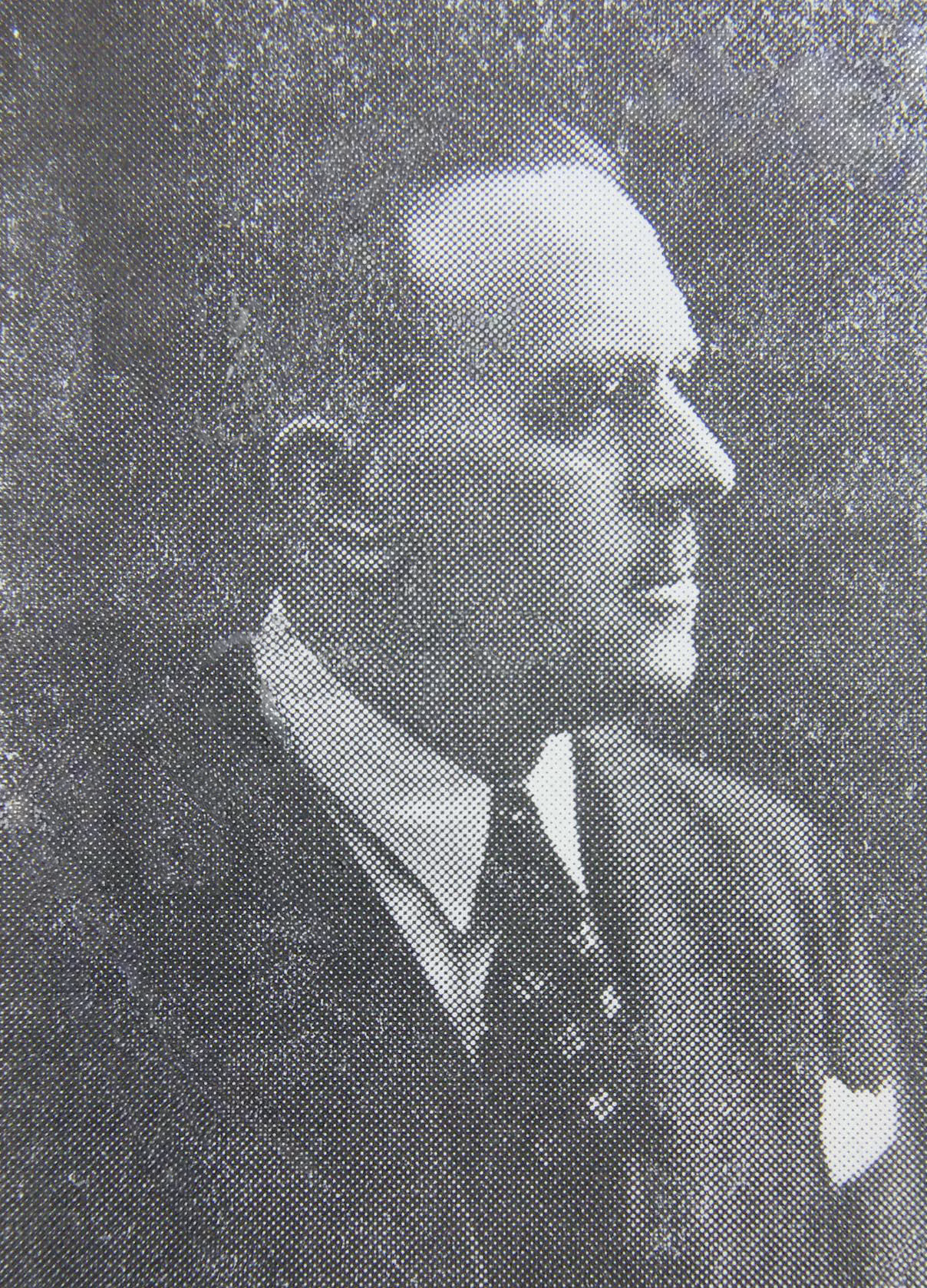|
Paraschiv Vasilescu
Paraschiv Vasilescu (March 14, 1864–1925) was one of the generals of the Romanian Land Forces in the First World War. Between March 3, 1904 and April 1, 1905, Major Vasilescu was the commander of the Border Guard Corps. He served as a division commander in the 1916, 1917, and 1918 campaigns. Ioanițiu, Alexandru (Lt.-Colonel), ''Războiul României: 1916–1918'',vol 1, Tipografia Geniului, București, 1929 Biography After graduating in 1885 from the military school of officers with the rank of second lieutenant, Vasilescu held various positions in the infantry units or in the upper echelons of the army, the most important being those of commander of the 3rd Infantry Regiment and of the 4th Territorial Corps. Ministry of War, '' Yearbook of the Romanian Army for 1914, '' F. Gobl and Sons Printing House, Bucharest, 1914 Ministry of War, '' Yearbook of the Romanian Army for 1915, '' George Ionescu Printing and Graphic Arts Establishment, Bucharest, 1915 During World War I, he serv ... [...More Info...] [...Related Items...] OR: [Wikipedia] [Google] [Baidu] |
Bucharest
Bucharest ( , ; ro, București ) is the capital and largest city of Romania, as well as its cultural, industrial, and financial centre. It is located in the southeast of the country, on the banks of the Dâmbovița River, less than north of the Danube River and the Bulgarian border. Bucharest was first mentioned in documents in 1459. The city became the capital of Romania in 1862 and is the centre of Romanian media, culture, and art. Its architecture is a mix of historical (mostly Eclectic, but also Neoclassical and Art Nouveau), interbellum ( Bauhaus, Art Deco and Romanian Revival architecture), socialist era, and modern. In the period between the two World Wars, the city's elegant architecture and the sophistication of its elite earned Bucharest the nickname of 'Paris of the East' ( ro, Parisul Estului) or 'Little Paris' ( ro, Micul Paris). Although buildings and districts in the historic city centre were heavily damaged or destroyed by war, earthquakes, and even Nic ... [...More Info...] [...Related Items...] OR: [Wikipedia] [Google] [Baidu] |
Alexandru Ioanițiu
Alexandru Ioanițiu (2 February 1890 – 17 September 1941) was a Romanian major general. He led Romanian troops against the Soviet Union during World War II, and was killed when he accidentally stepped into the moving propeller of his aircraft upon landing at an airport near Odessa while it was under siege. Biography Ioanițiu was born in Botoșani, in northern Moldavia. He attended the military school in Iași, graduating as second lieutenant in 1910 and lieutenant in 1913. After Romania entered World War I on the side of the Allies, he fought in the Romanian Campaign of 1916 in Dobruja and at the Battle of the Argeș. He was promoted to captain in 1916 and major in 1917, and fought at the Battle of Mărășești. Afterwards he pursued his studies at the Higher War School in Bucharest (1919–1920). He was promoted to lieutenant colonel in 1928, to colonel in 1933, and to brigadier general in 1939. From May 1939 to September 1940 he was the commander of the Higher War Schoo ... [...More Info...] [...Related Items...] OR: [Wikipedia] [Google] [Baidu] |
Romanian Army World War I Generals
Romanian may refer to: *anything of, from, or related to the country and nation of Romania **Romanians, an ethnic group **Romanian language, a Romance language ***Romanian dialects, variants of the Romanian language **Romanian cuisine, traditional foods **Romanian folklore *Romanian (stage), a stage in the Paratethys The Paratethys sea, Paratethys ocean, Paratethys realm or just Paratethys was a large shallow inland sea that stretched from the region north of the Alps over Central Europe to the Aral Sea in Central Asia. Paratethys was peculiar due to its pa ... stratigraphy of Central and Eastern Europe *'' The Romanian'' newspaper *'' The Romanian: Story of an Obsession'', a 2004 novel by Bruce Benderson * * {{disambiguation Language and nationality disambiguation pages ... [...More Info...] [...Related Items...] OR: [Wikipedia] [Google] [Baidu] |
Romanian Military Personnel Of The Second Balkan War
Romanian may refer to: *anything of, from, or related to the country and nation of Romania **Romanians, an ethnic group **Romanian language, a Romance language ***Romanian dialects, variants of the Romanian language **Romanian cuisine, traditional foods **Romanian folklore The folklore of Romania is the collection of traditions of the Romanians. A feature of Romanian culture is the special relationship between folklore and the learned culture, determined by two factors. First, the rural character of the Romanian ... * Romanian (stage), a stage in the Paratethys stratigraphy of Central and Eastern Europe *'' The Romanian'' newspaper *'' The Romanian: Story of an Obsession'', a 2004 novel by Bruce Benderson * * {{disambiguation Language and nationality disambiguation pages ... [...More Info...] [...Related Items...] OR: [Wikipedia] [Google] [Baidu] |
Romanian Land Forces Generals
Romanian may refer to: *anything of, from, or related to the country and nation of Romania **Romanians, an ethnic group **Romanian language, a Romance language ***Romanian dialects, variants of the Romanian language **Romanian cuisine, traditional foods **Romanian folklore *Romanian (stage), a stage in the Paratethys The Paratethys sea, Paratethys ocean, Paratethys realm or just Paratethys was a large shallow inland sea that stretched from the region north of the Alps over Central Europe to the Aral Sea in Central Asia. Paratethys was peculiar due to its pa ... stratigraphy of Central and Eastern Europe *'' The Romanian'' newspaper *'' The Romanian: Story of an Obsession'', a 2004 novel by Bruce Benderson * * {{disambiguation Language and nationality disambiguation pages ... [...More Info...] [...Related Items...] OR: [Wikipedia] [Google] [Baidu] |
1925 Deaths
Nineteen or 19 may refer to: * 19 (number), the natural number following 18 and preceding 20 * one of the years 19 BC, AD 19, 1919, 2019 Films * ''19'' (film), a 2001 Japanese film * ''Nineteen'' (film), a 1987 science fiction film Music * 19 (band), a Japanese pop music duo Albums * ''19'' (Adele album), 2008 * ''19'', a 2003 album by Alsou * ''19'', a 2006 album by Evan Yo * ''19'', a 2018 album by MHD * ''19'', one half of the double album ''63/19'' by Kool A.D. * ''Number Nineteen'', a 1971 album by American jazz pianist Mal Waldron * ''XIX'' (EP), a 2019 EP by 1the9 Songs * "19" (song), a 1985 song by British musician Paul Hardcastle. * "Nineteen", a song by Bad4Good from the 1992 album '' Refugee'' * "Nineteen", a song by Karma to Burn from the 2001 album ''Almost Heathen''. * "Nineteen" (song), a 2007 song by American singer Billy Ray Cyrus. * "Nineteen", a song by Tegan and Sara from the 2007 album '' The Con''. * "XIX" (song), a 2014 song by Slipk ... [...More Info...] [...Related Items...] OR: [Wikipedia] [Google] [Baidu] |
1864 Births
Events January–March * January 13 – American songwriter Stephen Foster ("Oh! Susanna", "Old Folks at Home") dies aged 37 in New York City, leaving a scrap of paper reading "Dear friends and gentle hearts". His parlor song " Beautiful Dreamer" is published in March. * January 16 – Denmark rejects an Austrian-Prussian ultimatum to repeal the Danish Constitution, which says that Schleswig-Holstein is part of Denmark. * January 21 – New Zealand Wars: The Tauranga campaign begins. * February – John Wisden publishes '' The Cricketer's Almanack for the year 1864'' in England; it will go on to become the major annual cricket reference publication. * February 1 – Danish-Prussian War (Second Schleswig War): 57,000 Austrian and Prussian troops cross the Eider River into Denmark. * February 15 – Heineken brewery founded in Netherlands. * February 17 – American Civil War: The tiny Confederate hand-propelled submarine ''H. L. Hunl ... [...More Info...] [...Related Items...] OR: [Wikipedia] [Google] [Baidu] |
Constantin Kirițescu
Constantin Kirițescu (September 3, 1876 – August 12, 1965) was a Romanian zoologist, educator and historian. Born and schooled in Bucharest, he occupied successive posts in the Education Ministry, with education being a running theme of his diverse interests. He was among the founders of the Romanian Academy of Sciences.Ovidiu Bozgan and Cornel Beda, "Din corespondența lui Constantin Kirițescu", in ''Revista istorică'', Volume 7, p.271-75. Editura Academiei Române, 1996 Kirițescu was a teacher at Saint Sava High School. His name is most associated with ''Istoria războiului pentru reîntregirea României'' ("The History of the War That United Romania"), a 1922 account of the part played by Romania in World War I.Maria Bucur, ''Heroes and Victims: Remembering War in Twentieth-century Romania'', p.81. Indiana University Press Indiana University Press, also known as IU Press, is an academic publisher founded in 1950 at Indiana University that specializes in the humaniti ... [...More Info...] [...Related Items...] OR: [Wikipedia] [Google] [Baidu] |
Toplița
Toplița (; hu, Maroshévíz, ) is a municipality in Harghita County, Transylvania, Romania. The settlement has had multiple name changes: ''Taplócza'', ''Toplicza'', ''Gyergyó-Toplicza'', from February 3, 1861 ''Oláh-Toplicza'', or "Romanian Toplița", then from January 1, 1907 ''Maroshévíz'', until 1918, when it received the Romanian name ''Toplița Română''. Both the Romanian and the Hungarian name mean "hot water spring"; the first is a Romanian word of Slavic origin. The city administers eight villages: Călimănel (''Kelemenpatak''), Luncani (''Lunkány''), Măgheruș (''Magyaros''), Moglănești (''Moglán''), Secu (''Székpatak''), Vâgani (''Vugány''), Vale (''Válya'') and Zencani (''Zsákhegy''). Demographics According to the last census from 2011, there were 13,282 people living in the city. Of this population, 68.49% are ethnic Romanians, while 22.11% are ethnic Hungarians (primarily Székelys) and 3.64% ethnic Romani. Among the villages which are par ... [...More Info...] [...Related Items...] OR: [Wikipedia] [Google] [Baidu] |
Eremia Grigorescu
Eremia Teofil Grigorescu (28 November 1863 – 21 July 1919) was a Romanian artillery general during World War I, and Minister of War in the Constantin Coandă cabinet (October–November 1918). Early life Born in 1863 in the village Golășei (Bujor Sat) near Târgu Bujor, in Covurlui County, now Galați County, he studied at the Vasile Alecsandri High School in Galați from 1870 to 1878, and then to the Costache Negruzzi National College in Iași from 1878 to 1881. He then attended for a year the Faculty of Medicine of the University of Iași, before transferring to the Military School for Infantry and Cavalry in Bucharest. After graduating in 1884 with the rank of second lieutenant, Grigorescu pursued his studies in France, taking mathematics courses at the Sorbonne. He also attended special artillery and administration courses at the Military School of Saint-Cyr and at the French Ministry of War. In 1903 he was appointed director of the Artillery section at the War Mi ... [...More Info...] [...Related Items...] OR: [Wikipedia] [Google] [Baidu] |
Order Of Michael The Brave
The Order of Michael the Brave ( ro, Ordinul Mihai Viteazul) is Romania's highest military decoration, instituted by King Ferdinand I during the early stages of the Romanian Campaign of the First World War, and was again awarded in the Second World War. The Order, which may be bestowed either on an individual or on a whole unit, was named in honor of Michael the Brave (''Mihai Viteazul''), the late 16th-century Prince of Wallachia, Transylvania, and Moldavia. Data : Requirements: Awarded to officers only for exceptional deeds on the battlefield. It is the highest ranking Romanian military order. : Classes: 3rd, 2nd and 1st : Date Instituted: September 26, 1916 : Number awarded: 2184 :: ''During WW1: ::: 1st class: 16 ::: 2nd class: 12 ::: 3rd class: 336 (of which 43 awarded to military units) :: ''During WW2: ::: 1st class: 15 ::: 2nd class: 76 (of which 13 awarded to military units) ::: 3rd class: 1628 (of which 118 awarded to military units) Recipients *Józef Piłsudski *Io ... [...More Info...] [...Related Items...] OR: [Wikipedia] [Google] [Baidu] |


